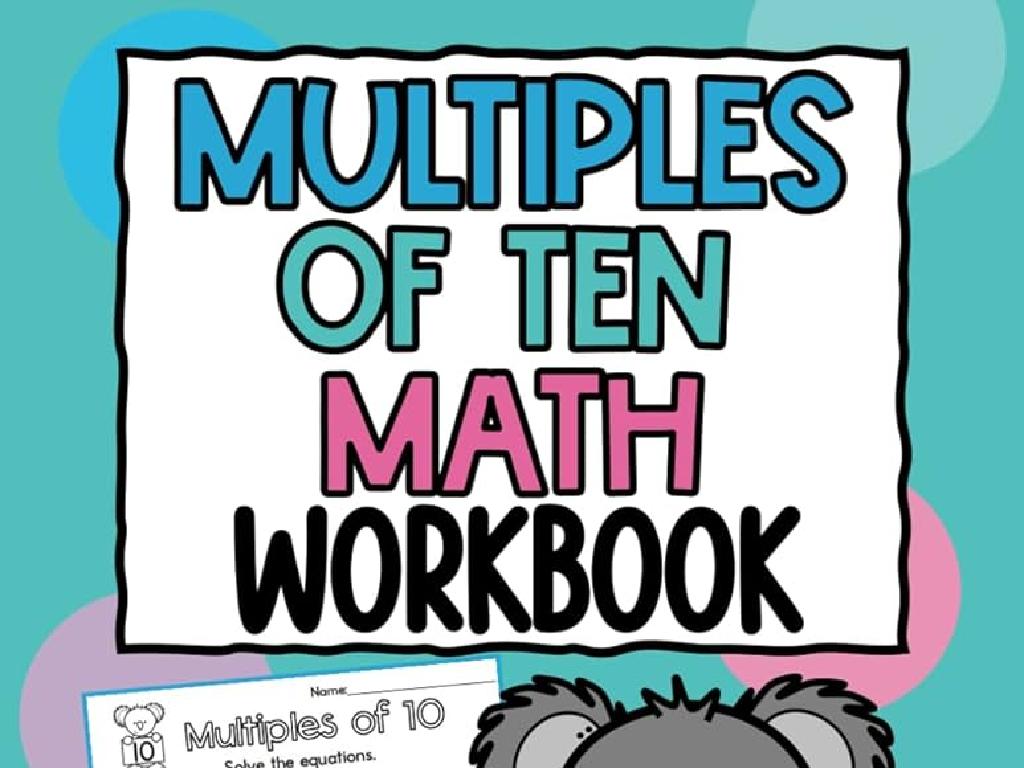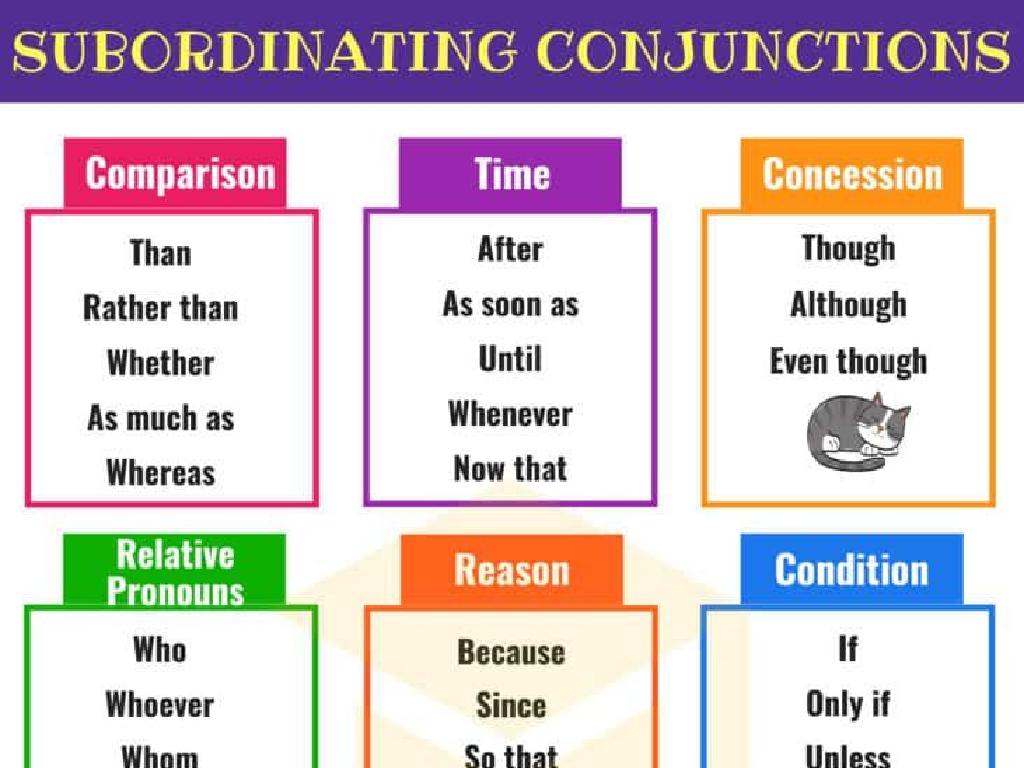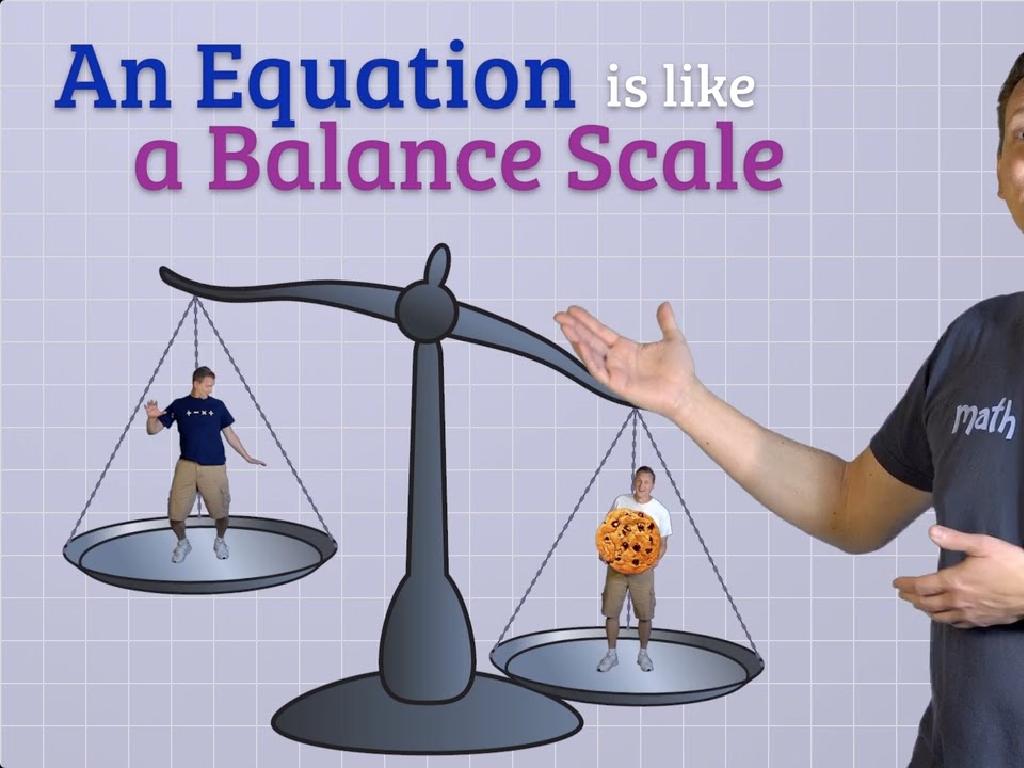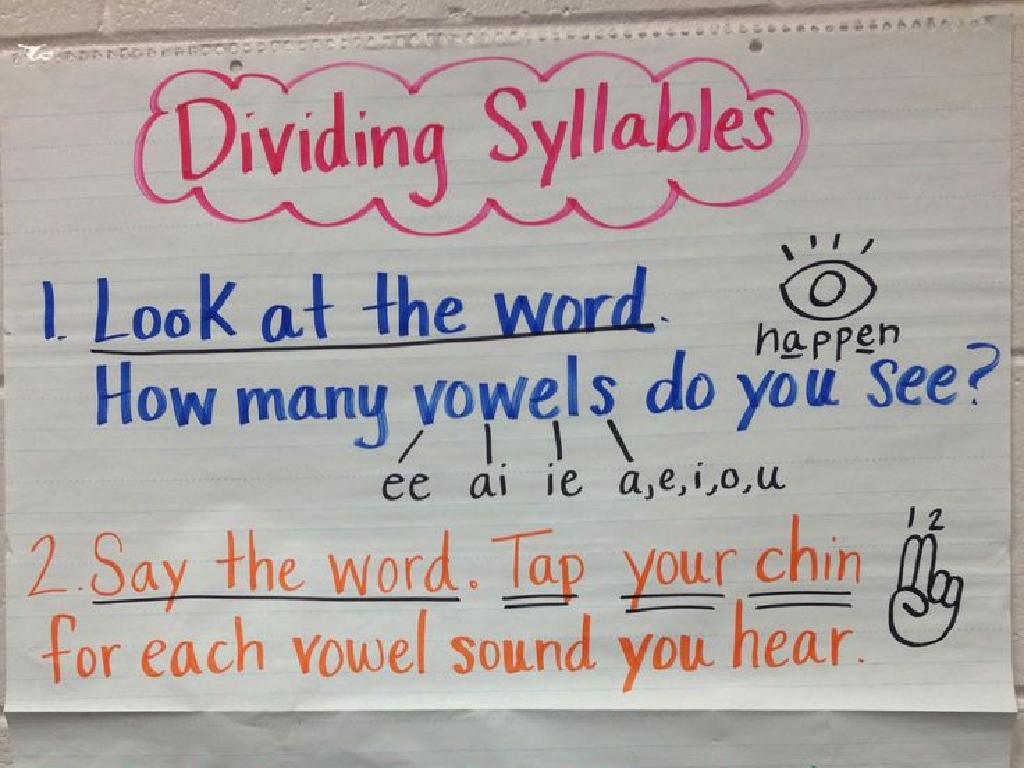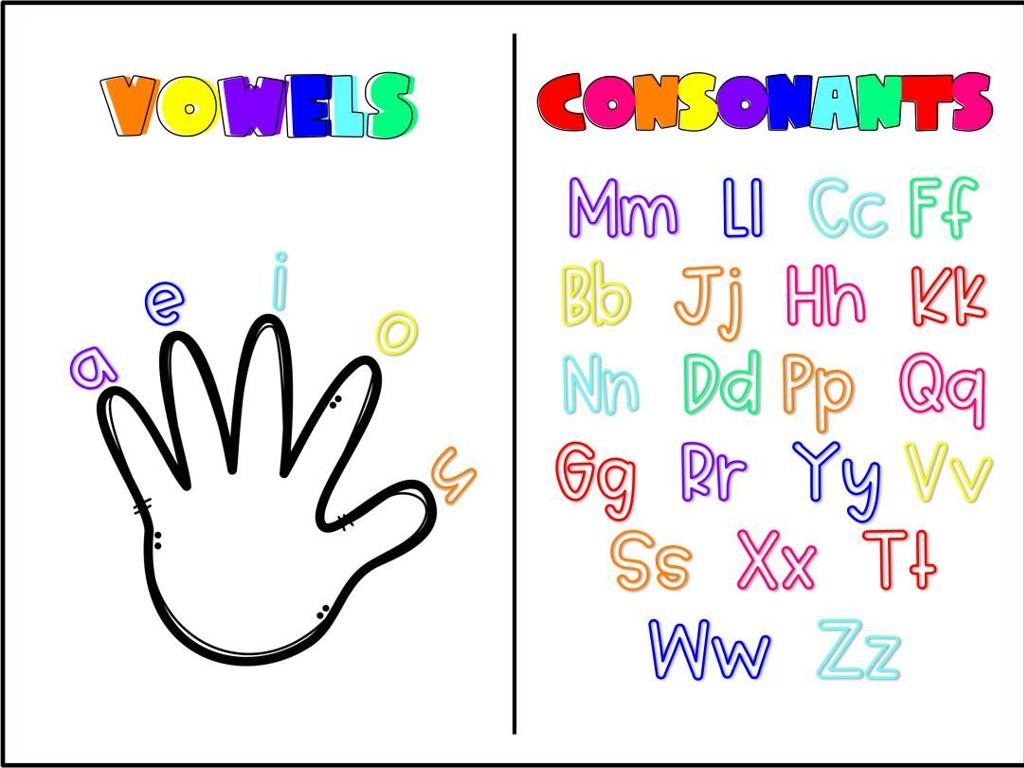How Do We Use Light And Sound To Communicate?
Subject: Science
Grade: First grade
Topic: Light And Sound
Please LOG IN to download the presentation. Access is available to registered users only.
View More Content
Exploring Communication with Light and Sound
– Light and sound are everywhere
– Using eyes and ears daily
– How do we use our eyes to see and ears to hear?
– Communication with light and sound
– Talking, alarms, traffic lights are ways we use them
– Examples of light and sound signals
– Flashlights for signals, sirens for emergencies
|
Begin the class by introducing the concepts of light and sound and how they are integral parts of our daily lives. Engage the students by asking them to share how they use their eyes and ears every day. Explain that light and sound are key to communication, such as talking for sound and using visual signals like traffic lights for light. Provide relatable examples such as using a flashlight to signal in the dark or hearing a siren to know an emergency vehicle is approaching. Encourage the students to think of other ways they use light and sound to communicate. This will help them understand the practical applications of these concepts in their everyday lives.
Exploring Light in Communication
– Light helps us see
– Light makes things visible to our eyes.
– Sources of light
– Sun, bulbs, and flashlights give us light.
– Experiment with a flashlight
– What do we notice when we use a flashlight?
– Light is used in communication
– Signals and signs use light to give messages.
|
This slide introduces the concept of light to first graders, explaining its role in visibility and its various sources. The flashlight activity is designed to engage students in discovering how light works. Teachers should demonstrate how to turn on a flashlight and observe the light it emits, discussing how it can be used to see in the dark. Highlight how light is essential for communication, such as traffic lights for safety, or using light signals to send messages. Encourage students to think of other ways light helps us communicate in our daily lives.
What is Sound?
– Sound is what we hear
– Sounds can be loud or soft
– Like a drum is loud, whispers are soft
– Sounds can be high or low
– A bird’s chirp is high, a cow’s moo is low
– Our voices make sounds
– Talking and singing are sounds we make
|
This slide introduces the concept of sound to first graders. Begin by explaining that sound is something we can hear with our ears. Illustrate the idea of loud and soft sounds by giving examples such as a drum for a loud sound and a whisper for a soft sound. To explain high and low sounds, use the chirp of a bird for a high sound and the moo of a cow for a low sound. Demonstrate how our voices can make different sounds by talking and singing. Encourage the children to make their own loud, soft, high, and low sounds to reinforce the concept.
Using Light to Communicate
– Light sends messages
– Traffic lights for safety
– Red means stop, green means go
– Lighthouses guide ships
– Warns about land at night
– Flashlights in the dark
– We can signal SOS with on/off
|
This slide introduces the concept of using light as a means of communication, which is a part of our everyday lives. Begin by explaining that light can carry messages without making a sound. Use traffic lights as an example to show how colors are used to tell drivers and pedestrians when it’s safe to move. Discuss how a lighthouse uses light to send a warning signal to ships to prevent them from coming too close to the shore. Introduce the idea of using flashlights to send signals, such as SOS in Morse code, by turning it on and off. Encourage the students to think of other ways we use light to communicate and to share their ideas in class.
Using Sound to Communicate
– Sharing thoughts with sounds
– We use words to tell others how we feel.
– Music from instruments
– Different instruments can make a variety of tunes.
– Animals talk using sounds
– Like how birds chirp to say ‘hello’ to other birds.
|
This slide introduces the concept of communication through sound to first graders. Begin by explaining that sound is not just something we hear, but a way we can send messages to others. Discuss how we use our voices to express ideas and emotions. Introduce musical instruments as another form of sound communication, creating melodies and rhythms to convey feelings or tell stories. Highlight how animals also communicate using sounds, such as birds chirping or dogs barking to interact with each other. Engage the students by asking them to share examples of how they use sound to communicate in their daily lives.
Fun with Light and Sound
– Shadows tell stories with light
– Use hands or toys to block light and form shadows on the wall
– Objects make various sounds
– Tap, shake, or scrape to discover sounds different objects make
– Create your own sounds
– Use your voice or objects around you to make unique sounds
|
This slide is designed to engage first-grade students in exploring how light and sound can be used for communication. Start by demonstrating how to create shadows on the wall using a flashlight and various objects, including their hands, to tell a simple story. Then, show how different objects can produce different sounds by tapping, shaking, or scraping them. Encourage the students to experiment with creating their own sounds using their voices or items in the classroom. This activity will help them understand the basics of light and sound in a fun, interactive way. Be prepared with examples and be ready to assist them in their exploration. The goal is to foster creativity and curiosity about the science of light and sound.
Class Activity: Light and Sound Show
– Create a show with flashlights
– Make shadow animals
– Use hands to form animal shapes with the light
– Produce animal sounds
– Use our voices to mimic the animals
– Perform our light and sound story
|
This activity is designed to help students understand how light and sound can be used for communication. Each student will receive a flashlight to create shadows on the wall, simulating animals. They will then use their voices to make the corresponding animal sounds, combining the use of light and sound to tell a story. For the teacher: Prepare flashlights for each student and ensure the room can be darkened. Guide the students on how to create shadow animals with their hands. Possible animals include a dog, cat, bird, or rabbit. After practicing, have the students perform their light and sound story in front of the class. This will help them learn about communication through different mediums in a fun and interactive way.

